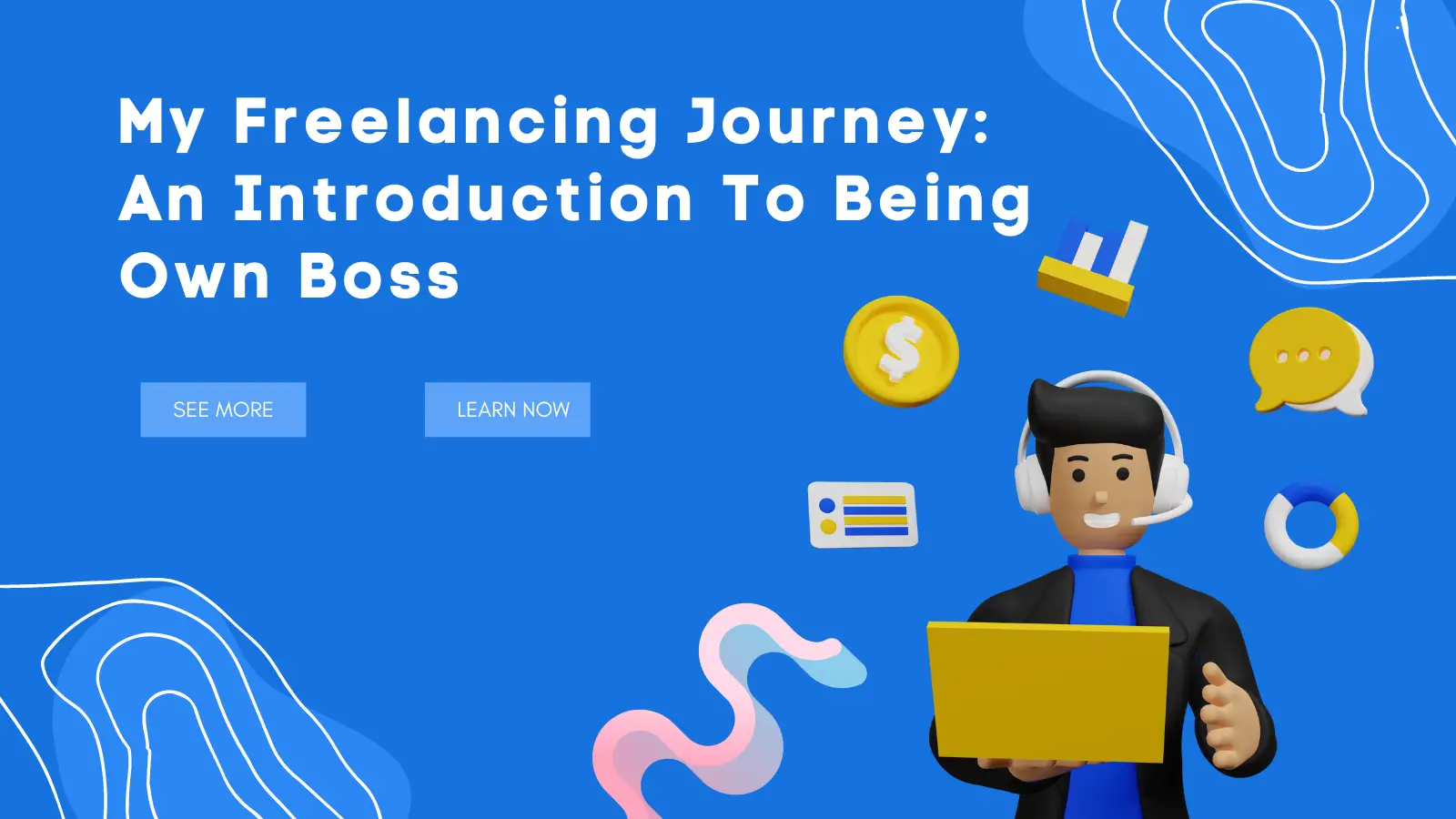I am writing this article to share my freelance journey and how I got into freelancing.
My Freelancing Journey
I graduated in 2019 from the Sokoine University of Agriculture in Tanzania. I knew the job market for Agricultural Economist is not exactly booming, and I wasn’t sure if I wanted to go to graduate school or not.
After graduating from university, I attended an agricultural studies internship in Israel and stayed there for a year. When I returned to my home country, I began to consider freelance work as a career choice.
I knew I had a love of writing, but no formal training in journalism, so becoming a writer was out of the question. Or so I thought. With no direction in life and more than $5,000 in debt from earning my degree, I decided to take a leap of faith and become a freelance writer.
| Takeaways |
|---|
| Embrace freelancing for increased independence. |
| Time management is crucial for freelance success. |
| Building a strong client base requires ethics. |
| Overcome fear to thrive on freelancing platforms. |
| Learn from others’ mistakes to avoid pitfalls. |
Freelance
For those unfamiliar with the term, “freelance” means working for multiple clients on a project-by-project basis, rather than as an employee of an organization. Projects can be small or large, and freelancers may work out of their homes or travel to client sites. Some freelancers do this full-time, while others do it part-time to supplement their income.
Freelancer Writer
I’m a full-time freelance writer, copywriter, editor and content strategist. I’ve been in the industry for over one year, and what I love most about it is that there’s always something to learn. Researching and writing about new topics is my favourite part of the job, and I also enjoy getting to know clients’ brands and helping them build their businesses.
Navigating the freelancing world successfully requires avoiding common pitfalls. Check out our comprehensive guide on 10 Freelancing Mistakes That Are Keeping You Broke to stay on the path to financial success.
Challenge
At first, it was challenging to find freelance jobs because I didn’t know where to search for them. Then I used some freelancing websites but they were not very helpful at first because there were so many scams and fake jobs on them. So now I use only Upwork. The platform is more reliable than other freelancing sites.
[Read 5 Common Freelancing Mistakes, and How to Avoid Them]
My First Client
My first client was an online retailer that wanted me to write product descriptions for their website. I charged them $75 per product description, which took me roughly 10 minutes each to write. So I made $7.50 per hour, which isn’t great money, but it was decent for a beginner with no experience.
Time is a precious resource for freelancers, so efficient time management is key. Discover practical tips and techniques in our article on Time Management Tips for Freelancers to boost productivity and achieve a healthy work-life balance.
Second Client
My second client was an SEO agency that needed writers for their clients’ blogs. They paid 1 cent per word (about $10 per 1000 words) and expected articles in three days or less. This was not very good money either, but it was better than the retailer gig.
Growing your client base on Upwork ethically is essential for long-term success. Learn valuable strategies in our article on How to Get More Clients on Upwork Without Lying, Cheating, or Stealing to build a strong reputation and attract quality clients.
Freelancing Experience
I have been a freelancer for about a year. I have worked for more than 10 clients and made about $14,000 in that time. The work has ranged from simple tasks to quite complex projects, but no matter what the scope of the project is, I’ve learned that there are a few basic principles that make a project go smoothly.
This article is intended to help you improve your chances of getting good feedback (and being paid what you’re worth) when you bid on a freelance project.
Don’t let fear hold you back from success on Upwork. Our article on Why You Shouldn’t Be Afraid of Upwork’s Permanent Ban sheds light on the ban process, helping you take necessary precautions and thrive on the platform.
My Freelance Advice
#1 ADVICE: As a freelancer, your life is in your hands, and although that may sound overwhelming, it’s also incredibly liberating. People who are new to freelancing are often scared to take the plunge because they’re worried about finding clients, but that’s not something you need to worry about if you have a plan.
#2 ADVICE: One of the things I have learned about working as a freelancer is that you need to practice a lot of self-discipline. Freelance work is a business, and there are many tasks that you will need to perform on a regular basis to keep your business running smoothly.
#3 ADVICE: One way to help increase your focus and productivity is by having a schedule. The key to having an effective schedule is to have it be flexible enough so that you can adapt and change with the needs of your freelance business.
One way to accomplish this is by using what is known as the Pomodoro Technique. This technique uses the concept of timeboxing, which means that you set aside specific periods of time for specific activities. For example, if you want to write an article, then you might set aside two hours every morning for writing articles. You could also use this technique for other things like creating content or researching information for your clients.
Want to know how to make the most of Upwork as a freelancer? Our guide on How Upwork Works for Freelancers walks you through the platform’s features, helping you optimize your freelancing experience.
Final Thoughts
I have noticed a trend: those who are really successful freelancers have gained this status by making sure that their skills never stop growing. Skills that can make you stand out when you apply for jobs. This means that even if you are at a point where you are making a comfortable income from your freelance work then it is probably worth investing in some new training and skills so that as time goes on, you will still be able to compete with designers who may be newer to the freelance world.
Further Reading
Be Your Own Boss: An Introduction to Freelancing: A comprehensive slide presentation providing valuable insights into the world of freelancing and how to get started.
Introduction to Freelancing: An informative Medium article that covers the basics of freelancing, its benefits, and tips for success.
How to Become a Freelancer: A detailed guide offering step-by-step instructions on transitioning into a successful freelancing career.
FAQs
What are the essential skills for a freelancer?
As a freelancer, you’ll need a combination of technical skills related to your specific field and essential soft skills like communication, time management, and self-discipline.
How do I set my freelance rates?
Setting freelance rates requires considering factors such as your expertise, market demand, project complexity, and your desired income. Researching industry standards can also help you determine competitive pricing.
How do I find clients as a freelancer?
Networking through social media, online platforms like Upwork and LinkedIn, and attending industry events can be effective ways to connect with potential clients and build your client base.
What are the pros and cons of freelancing compared to traditional employment?
Freelancing offers flexibility and autonomy, but it can also come with irregular income and the responsibility of managing your own business. Traditional employment provides stability and benefits, but it may lack the freedom of freelancing.
How do I handle taxes as a freelancer?
As a freelancer, you’ll be responsible for managing your taxes, including tracking income and deductible expenses. Consider consulting with a tax professional to ensure compliance with tax laws and optimize deductions.

Costantine Edward is a digital marketing expert, freelance writer, and entrepreneur who helps people attain financial freedom. I’ve been working in marketing since I was 18 years old and have managed to build a successful career doing what I love.
